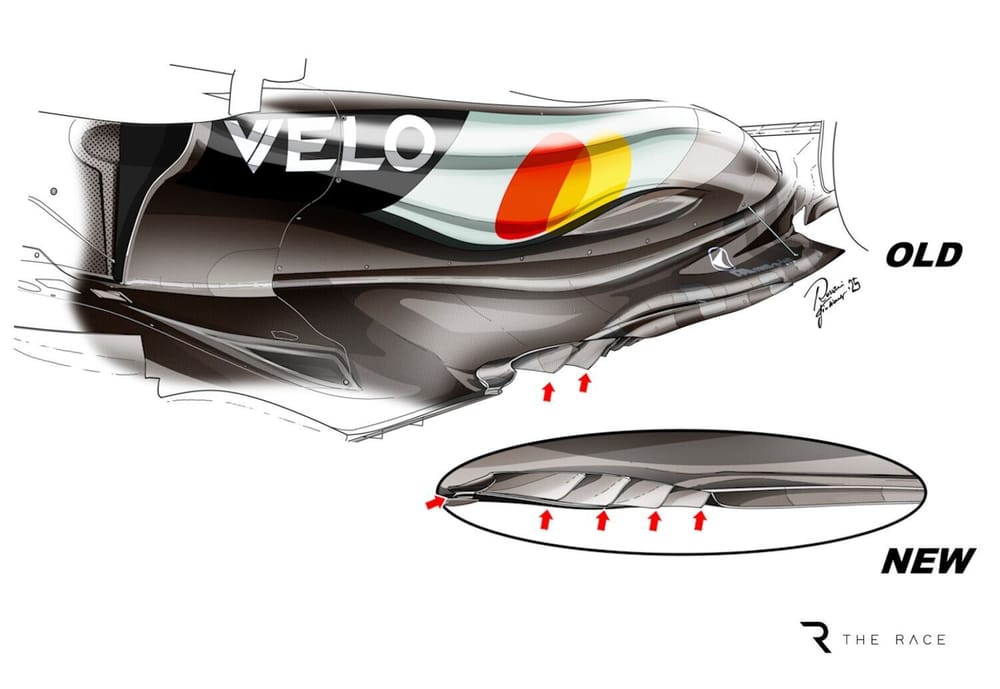The first half of the 2025 Formula 1 season has outlined a very clear technical picture that's shaped the title fight into an intra-team battle.
With the regulations now stable and a total revolution coming for 2026, teams have focused on targeted updates for 2025 rather than making radical changes compared to the 2024 cars.
McLaren and Ferrari were the two frontrunning teams that changed the most compared to 2024, having ended last year with the two most competitive cars.
But although McLaren is the true dominator this year in every respect, while Ferrari has struggled to extract the potential it expected from the SF-25.
McLaren's surgical approach
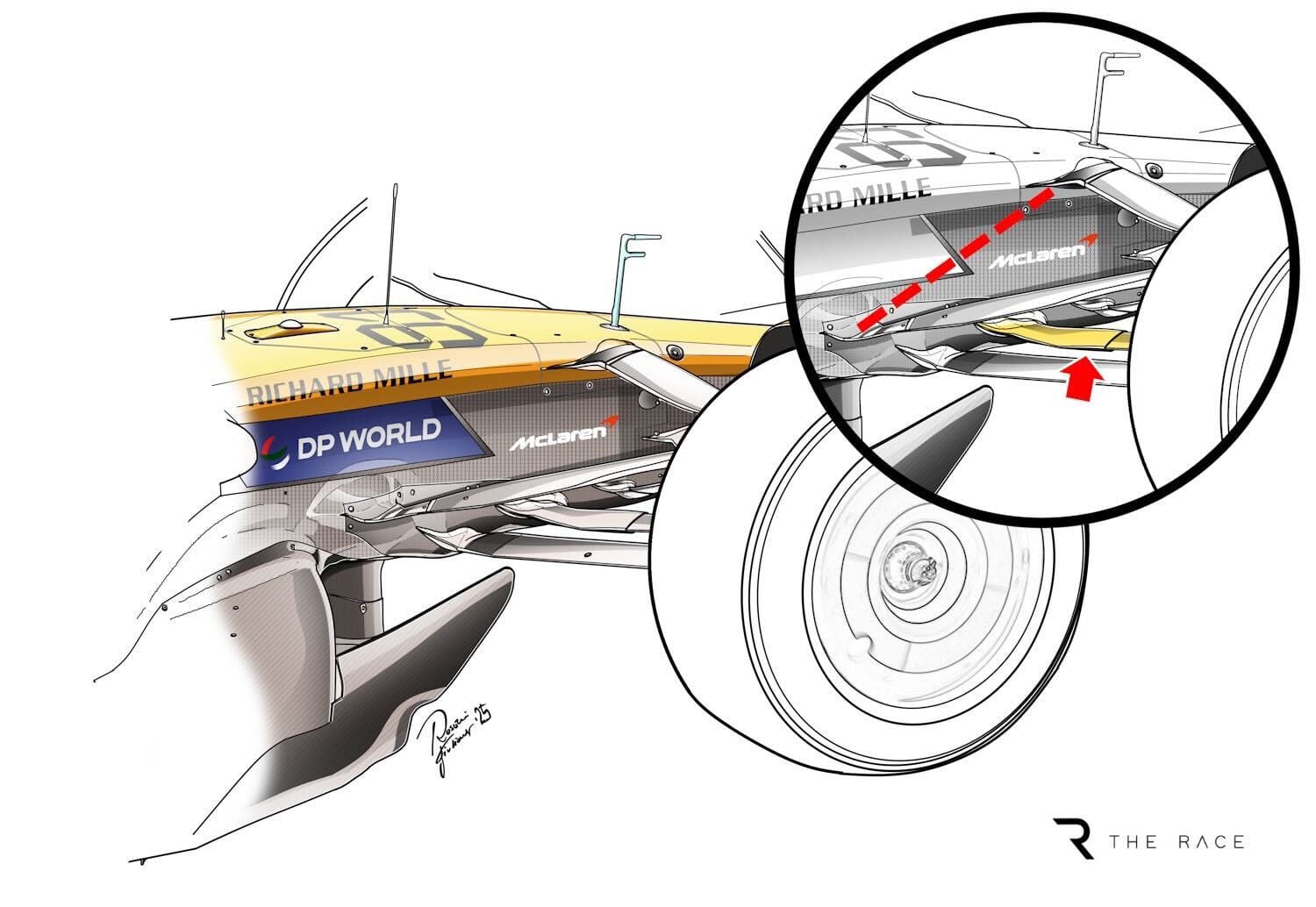
The McLaren MCL39 has been the reference car since the Melbourne season opener in March.
The team's philosophy was clear: introduce only safe and functional developments, avoiding risky packages.
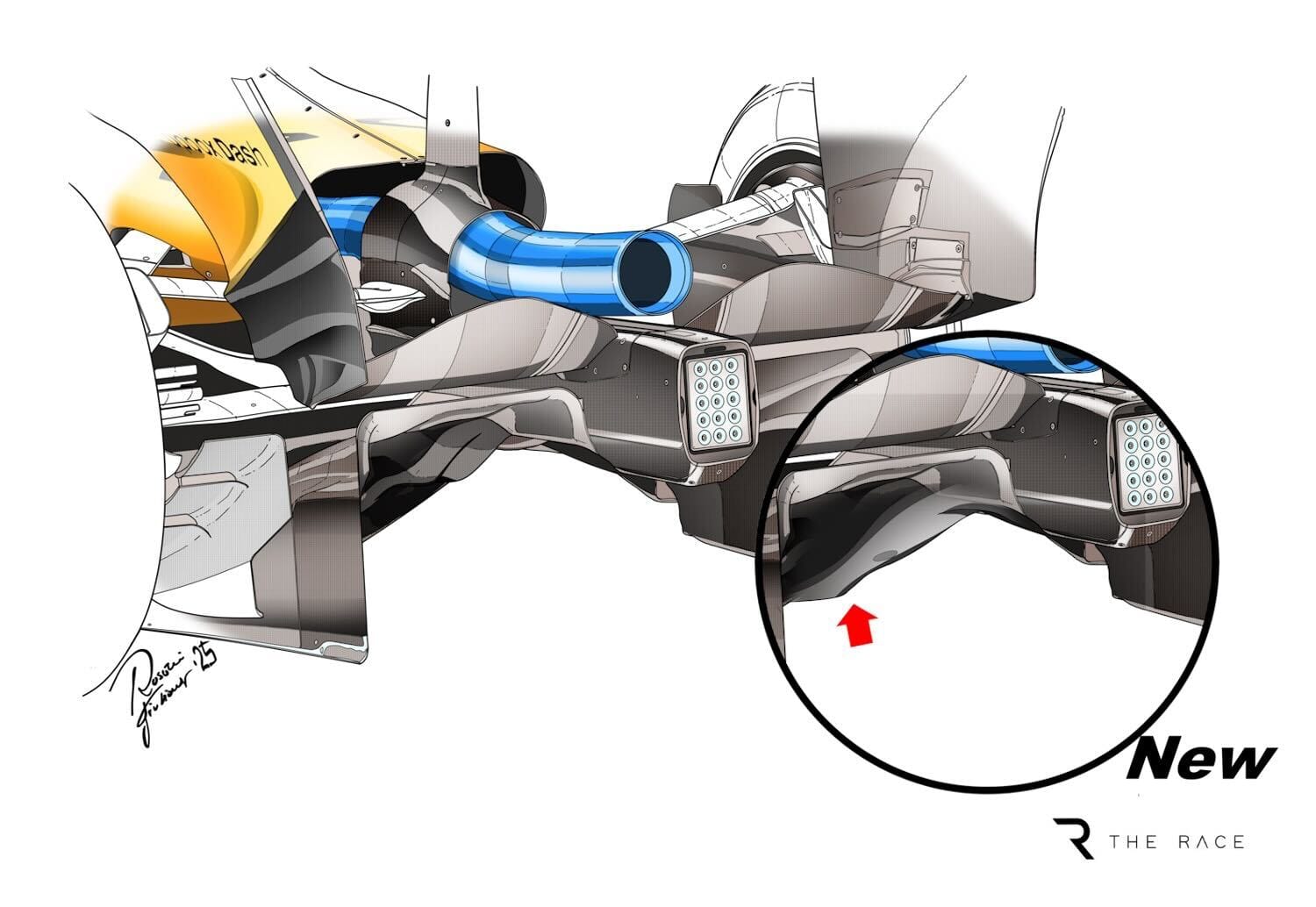
A clear example was the diffuser tested in Saudi Arabia, which was never raced: it didn't provide the necessary guarantees after a free practice test in Jeddah. Apart from that, no major upgrades were seen on the car in the first quarter of the season.
The first significant updates were introduced in Canada and Austria, featuring revised bodywork around the front and rear suspension, as well as the wheel corners, designed to enhance airflow to the floor and stabilise the car's efficiency. At Silverstone, an evolved floor was introduced (below), which increased stability in fast corners, further consolidating an already significant advantage.
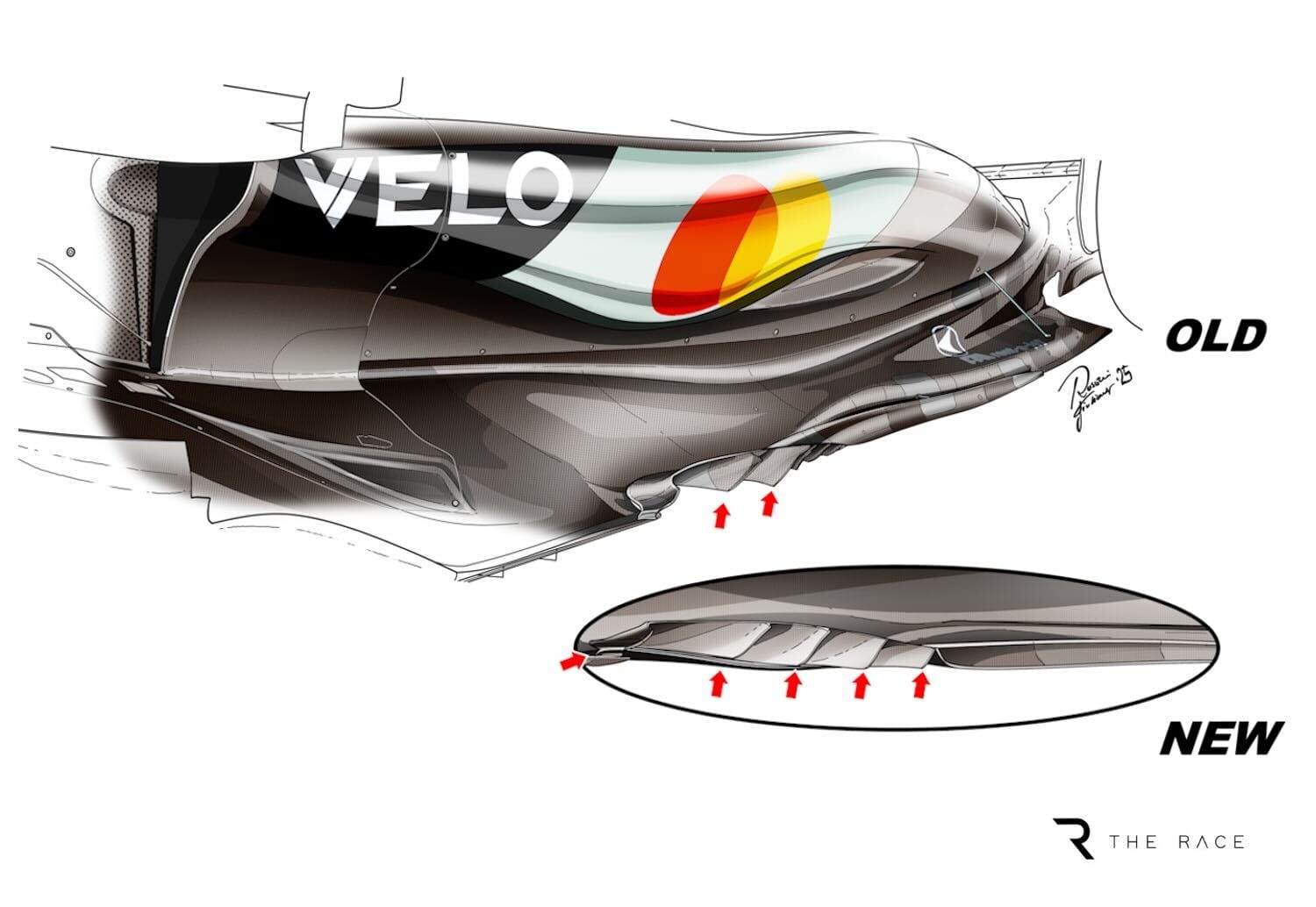
McLaren, therefore, didn't follow the path of large packages race after race - like its strategy in 2023 and 2024 - but pursued surgical development, able to continuously strengthen a car that was already born dominant.
Red Bull has lost its guiding path
While McLaren only had to refine an excellent project, Red Bull instead showed the difficulties of a team that seems to have lost its 'guiding path'.
The RB21 is a direct evolution of the RB20 from late-2024, which had already abandoned the extreme "bazooka" engine cover concept after its failure.
The new car was designed to regain balance, but the results were not convincing: chronic understeer has made the car hard to drive, and while Max Verstappen can still extract strong performances, his team-mates Liam Lawson and Yuki Tsunoda have never felt truly comfortable.
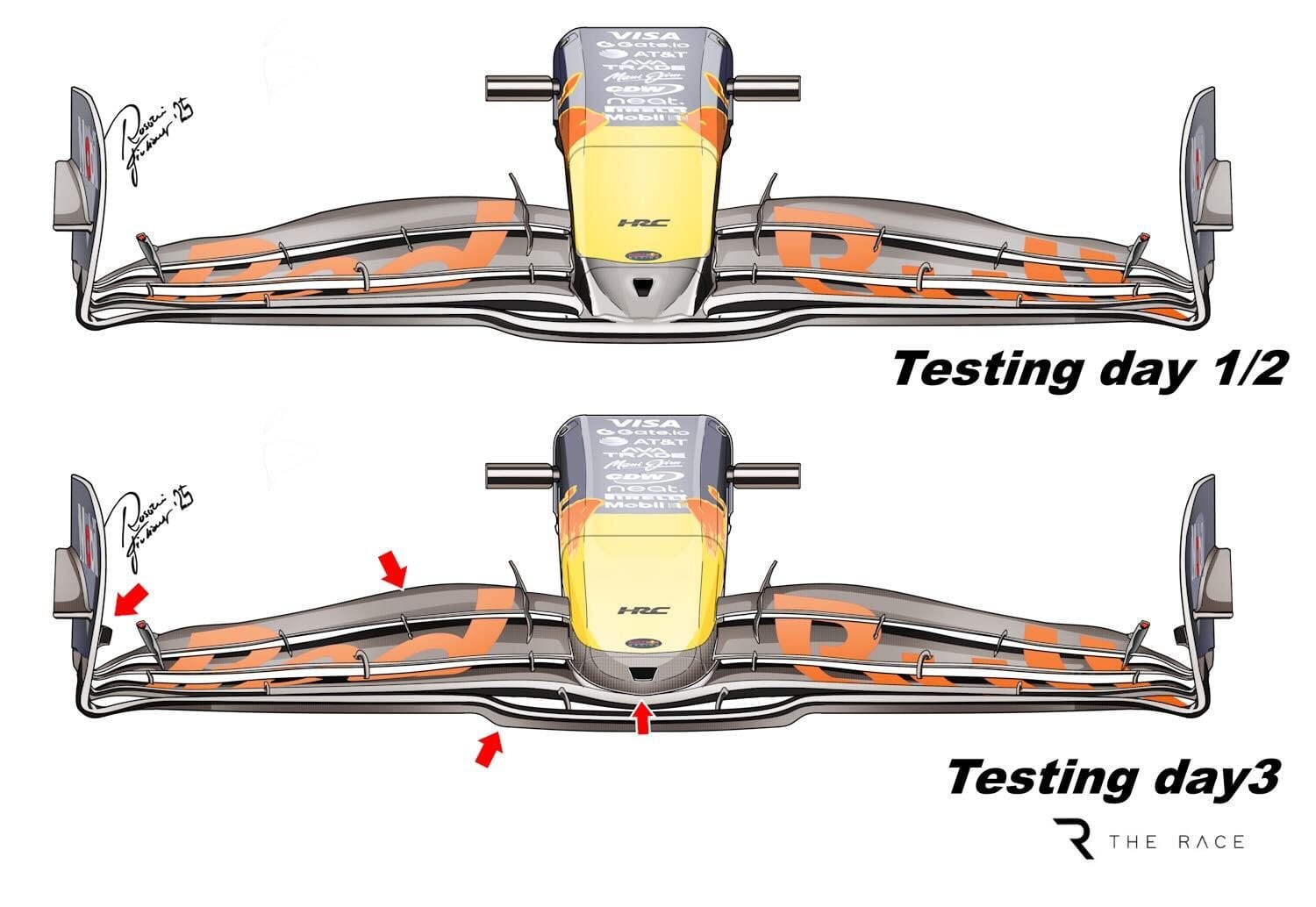
The most significant updates came immediately by the end of pre-season testing with a new nose and front wing, both already developed during the winter.
From then on, Red Bull continued to work in small steps: tweaks to the engine cover bodywork to refine rear aerodynamics, some changes to the floor, and above all, a major package at Imola, where the sidepod inlets were radically redesigned, abandoning the "shark mouth" philosophy.
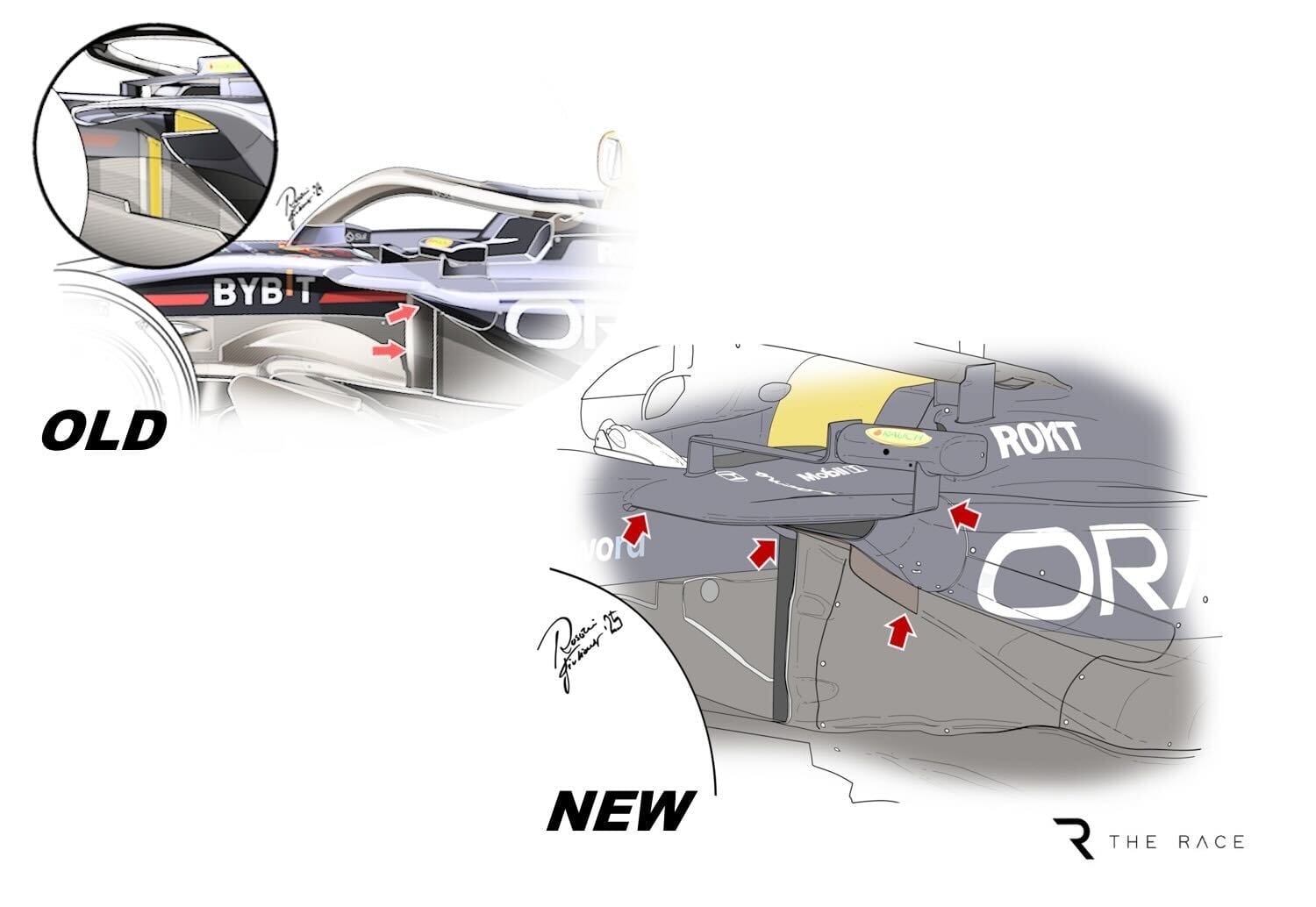
Despite this, the RB21 has never found the consistency needed to really fight for the championship. Verstappen remains the only one able to push it close to the limit, but compared to past years, Red Bull's title hopes are far, far smaller.
In a season where McLaren sets the pace with ease, Red Bull has gone from dominator to uncertain pursuer.
Ferrari: A fragile but growing platform
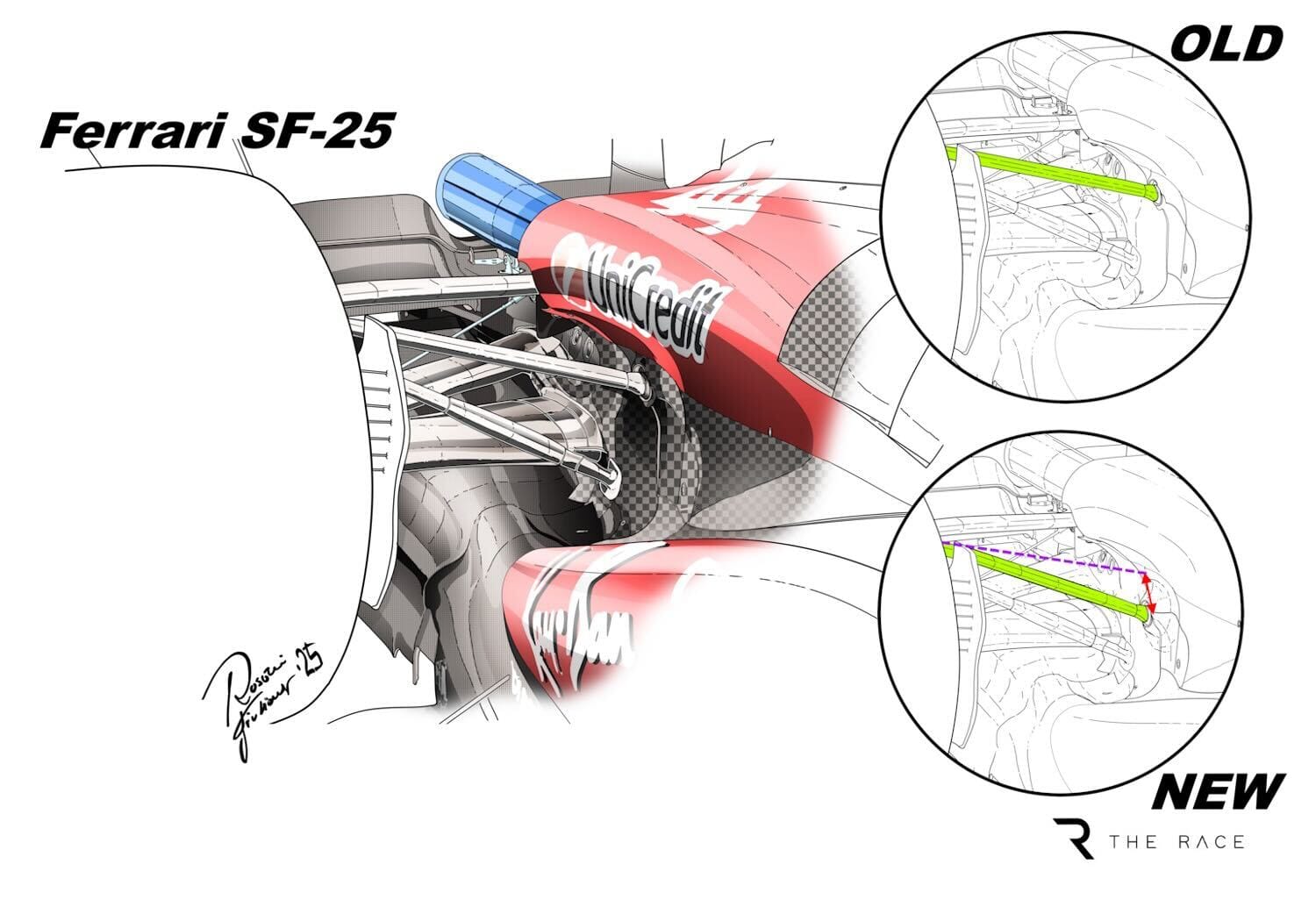
The Ferrari SF-25 represented a technical shift with the introduction of the pullrod front suspension.
But this choice complicated the interaction between the floor and the track: the different way the platform works has made it harder to run aggressive set-ups, often forcing the team into conservative compromises to avoid exceeding the 1mm plank wear limit imposed by the regulations.
The main updates focused on two areas: the floor, introduced in Bahrain and then in Austria, and the rear suspension, modified to give more braking stability and driver confidence. This latter change, introduced just before Hungary, was regarded by insiders as the most effective evolution, making the car more predictable.
Despite Charles Leclerc's pole position at the Hungaroring, the team has often had to adopt conservative race strategies - running high tyre pressures and conservative engine modes - which reduced the benefits of the updates.
Ferrari has improved the platform, but not enough to significantly close in on McLaren. And by now, Maranello has decided: no major package will arrive in the second half of the season, with its full focus already on 2026.
More of the same for Mercedes
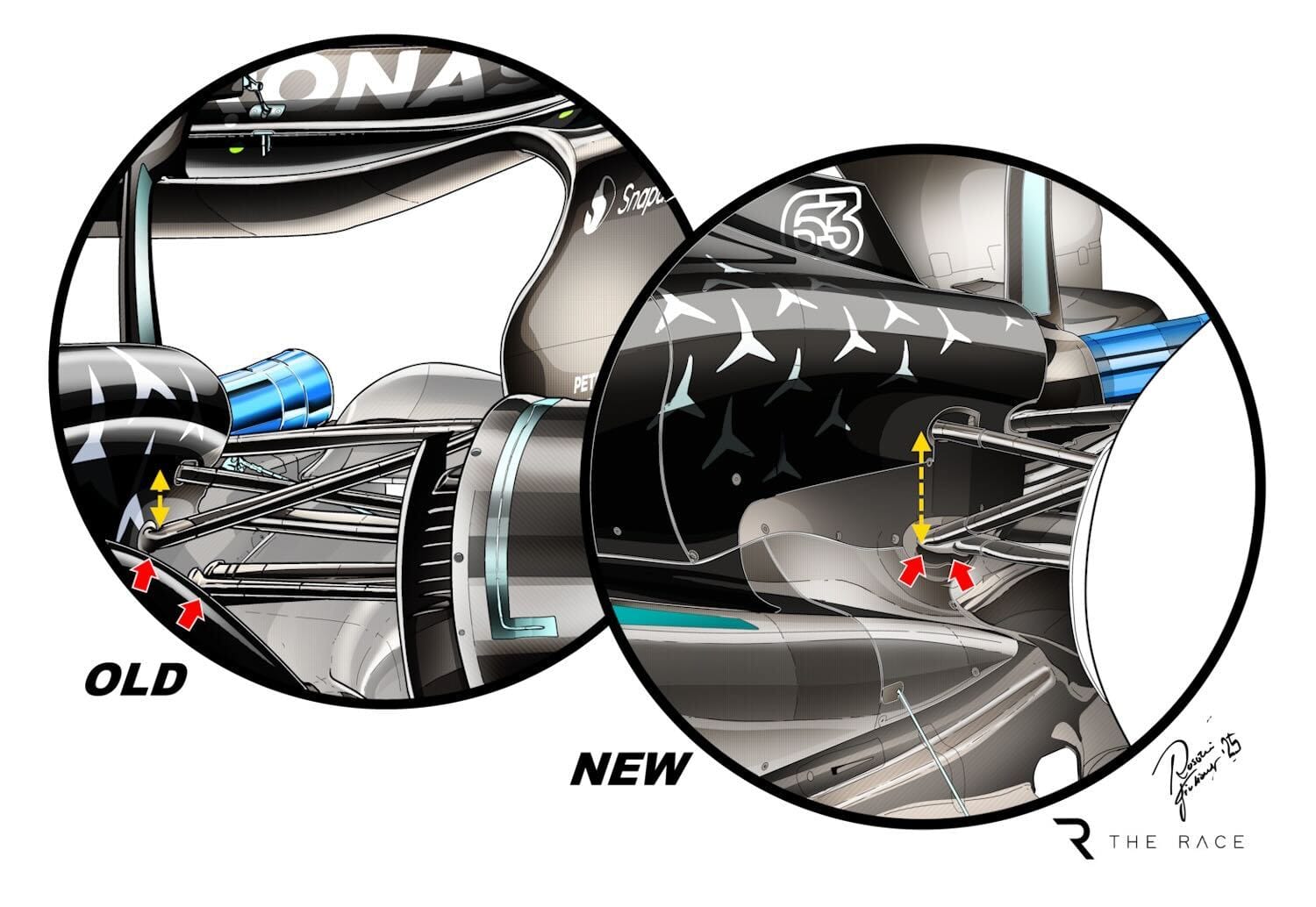
For Mercedes, the ground-effect era continues to be a bitter chapter. After dominating the previous era with eight consecutive titles, since 2022 the team has never managed to perfectly correlate simulations with the on-track reality.
The W16 has been no exception: more predictable than its predecessors, but still, generally, far from the level of rivals.
The clearest sign of trouble came in Hungary, where the team decided to definitively abandon the new rear suspension (above) introduced at Imola and alternated at some races, because it failed to deliver consistent benefits.
It was a U-turn that highlighted how something in the development chain is not working as it should.
No major upgrade packages were seen: apart from some front wing changes and minor tweaks to brake ducts and the floor, the W16 has remained essentially unchanged from the season opener.
The car performs well under certain circumstances, but the overall feeling is that, once again, this year something in the development process hasn't worked properly.
And with resources already diverted to the 2026 project, the chances of a turnaround during the current season are very slim.


